
How to Use 74HC11: Examples, Pinouts, and Specs
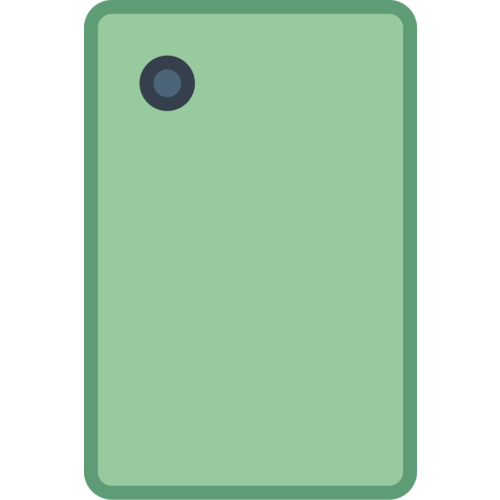
 Design with 74HC11 in Cirkit Designer
Design with 74HC11 in Cirkit DesignerIntroduction
The 74HC11 is an integrated circuit that contains three independent 3-input AND gates. It is part of the 74HC family of high-speed CMOS logic chips. AND gates are fundamental building blocks in digital electronics, performing a logical multiplication. The 74HC11 is commonly used in digital circuits where a logic level needs to be asserted only when multiple conditions are simultaneously true.
Explore Projects Built with 74HC11
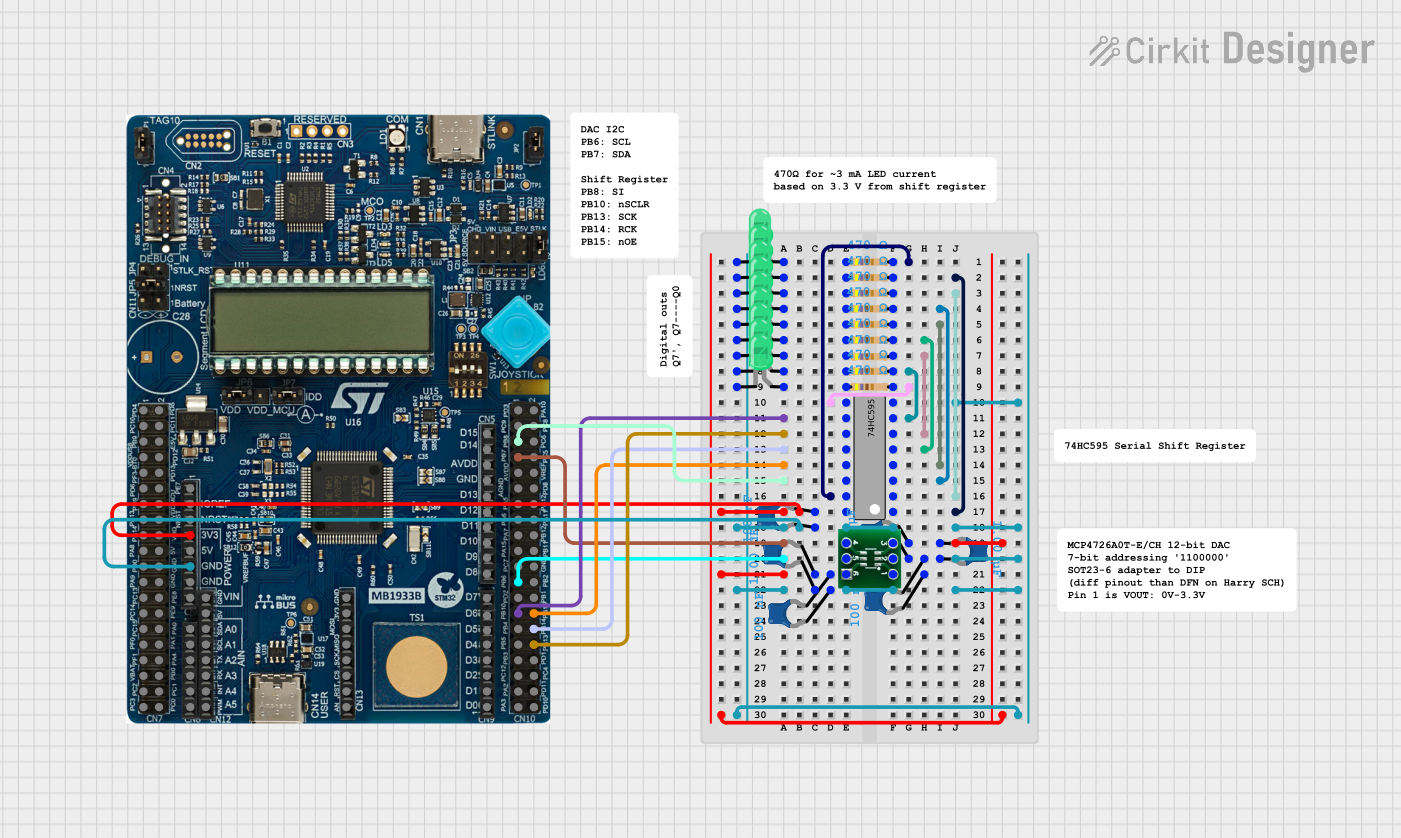
 Open Project in Cirkit Designer
Open Project in Cirkit Designer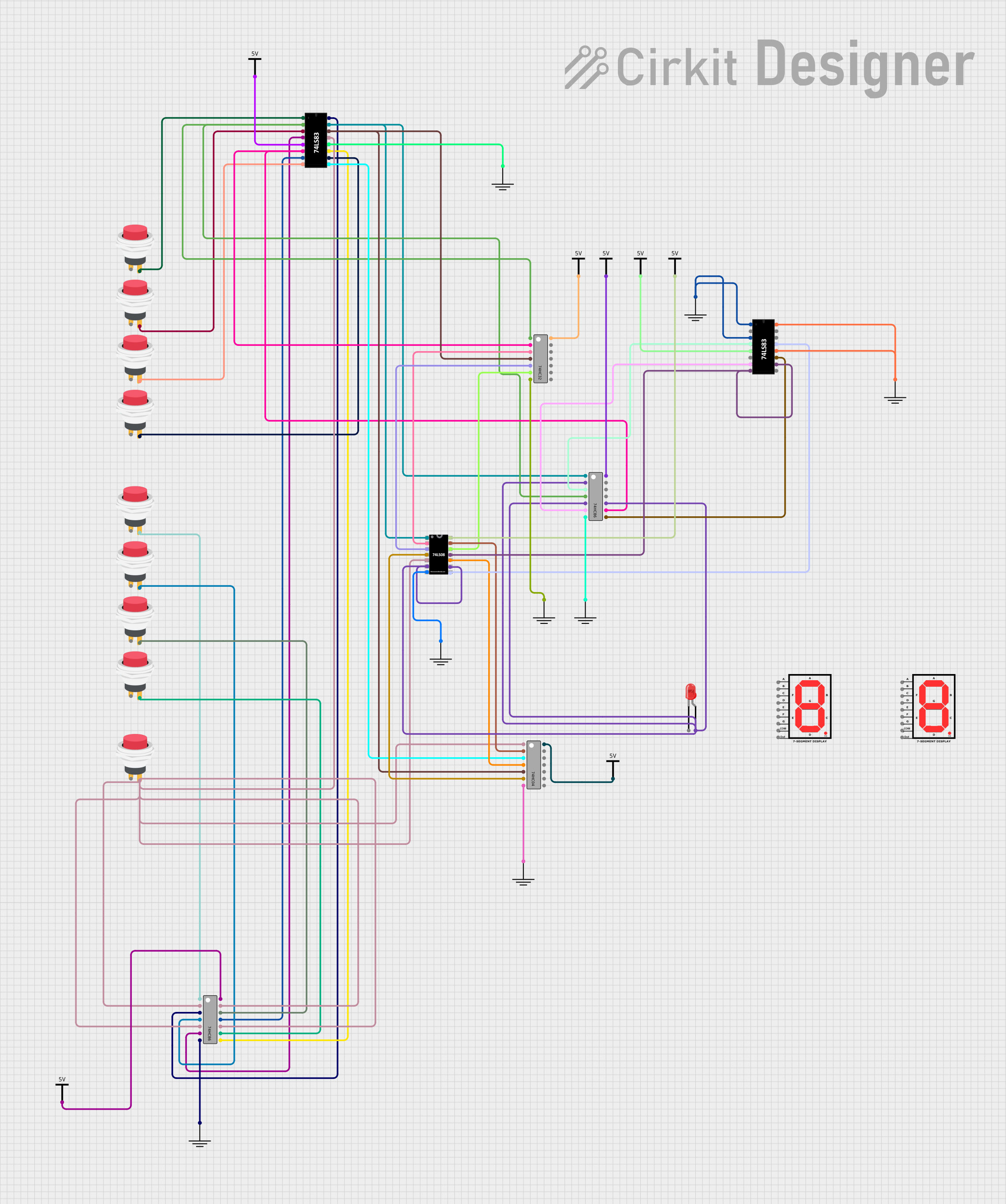
 Open Project in Cirkit Designer
Open Project in Cirkit Designer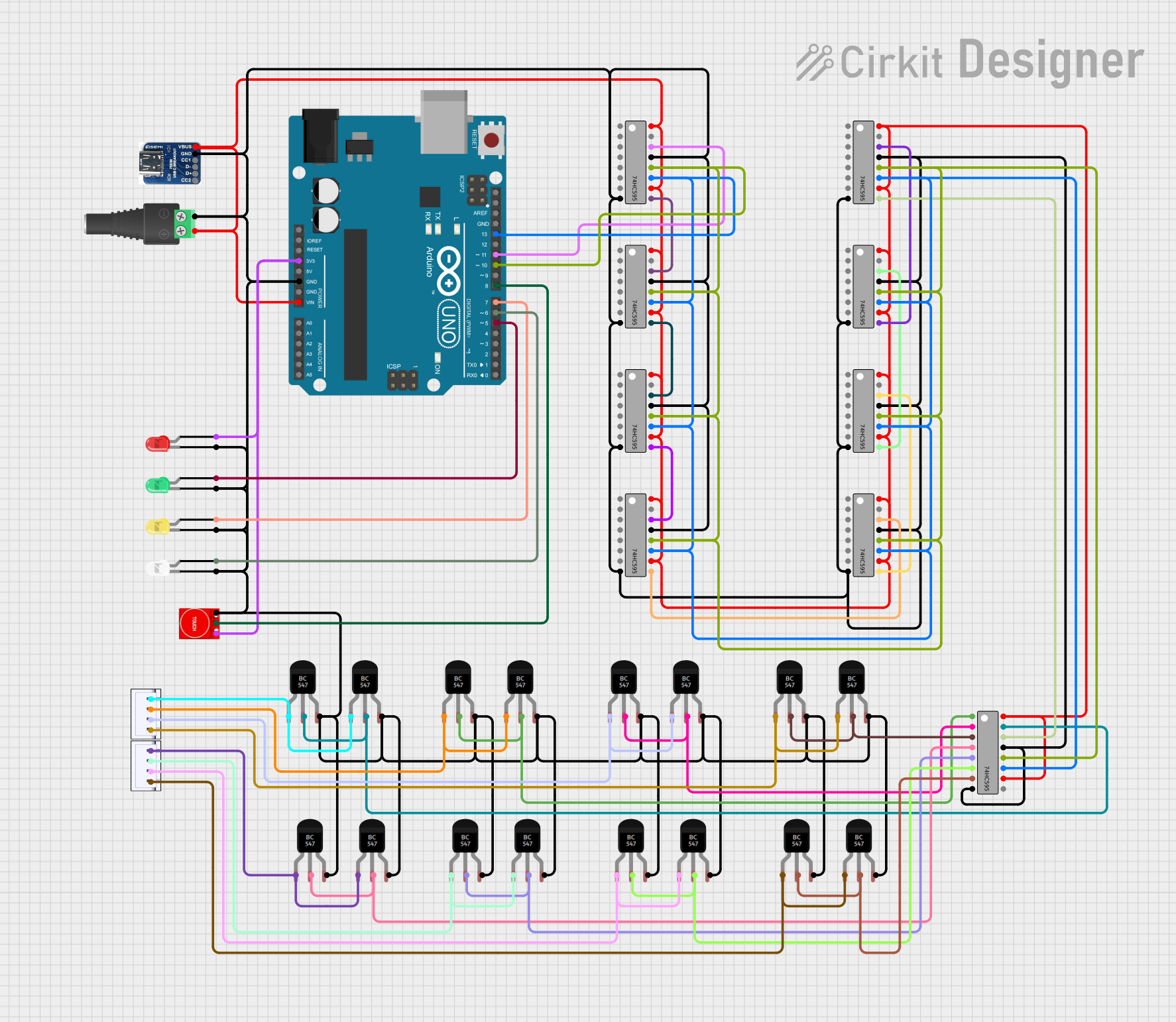
 Open Project in Cirkit Designer
Open Project in Cirkit Designer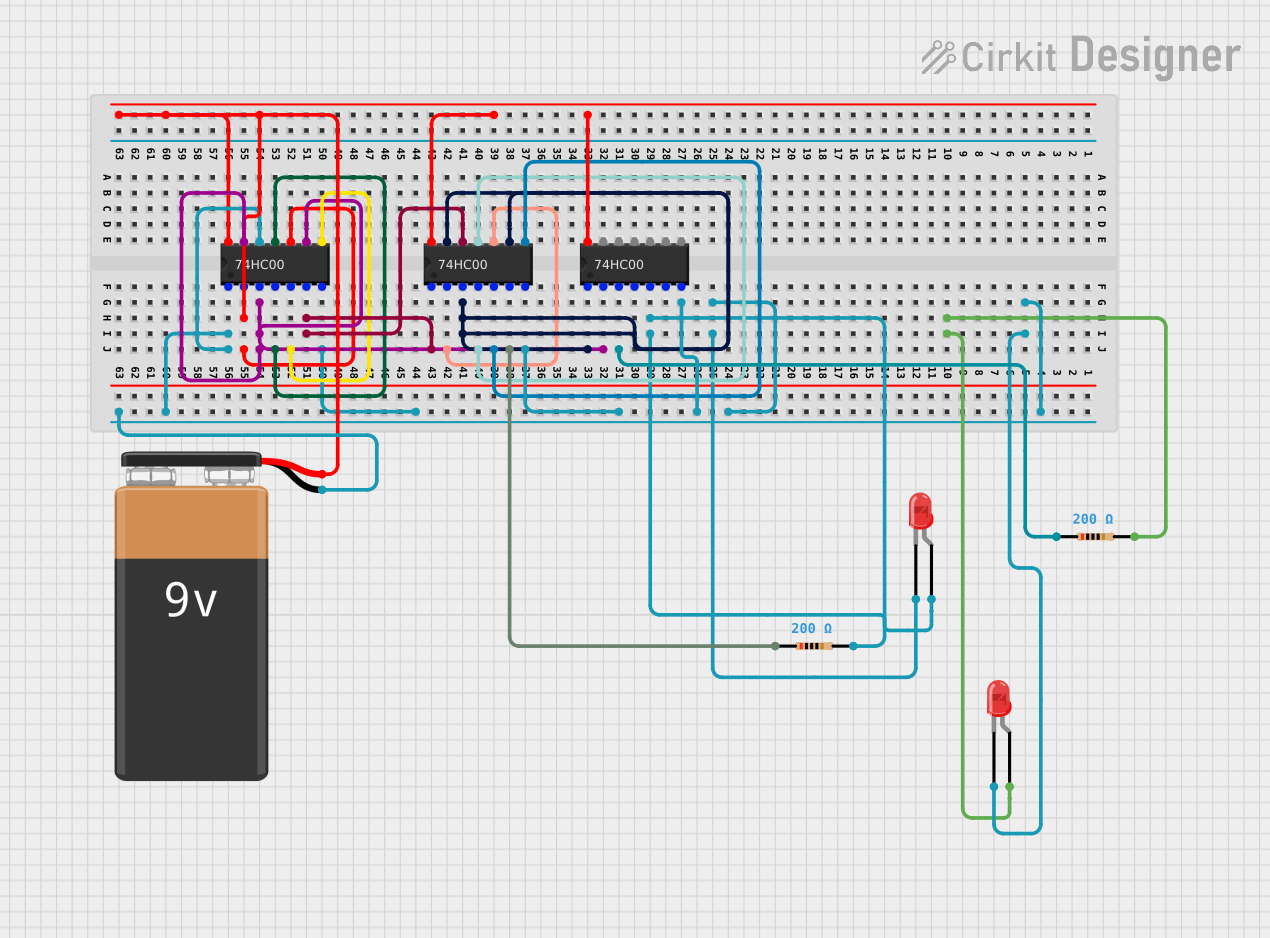
 Open Project in Cirkit Designer
Open Project in Cirkit DesignerExplore Projects Built with 74HC11

 Open Project in Cirkit Designer
Open Project in Cirkit Designer
 Open Project in Cirkit Designer
Open Project in Cirkit Designer
 Open Project in Cirkit Designer
Open Project in Cirkit Designer
 Open Project in Cirkit Designer
Open Project in Cirkit DesignerCommon Applications
- Digital logic circuits
- Control systems
- Signal gating
- Input signal conditioning
- Logic level matching
Technical Specifications
Key Technical Details
- Logic Type: AND Gate
- Number of Gates: 3
- Number of Inputs per Gate: 3
- Supply Voltage (Vcc): 2V to 6V
- High-Level Input Voltage (VIH): Minimum 2V
- Low-Level Input Voltage (VIL): Maximum 0.8V
- Output Current: ±5.2 mA
- Propagation Delay Time: 8ns (typical at Vcc = 5V)
- Operating Temperature: -40°C to +125°C
Pin Configuration and Descriptions
| Pin Number | Description |
|---|---|
| 1 | Input A1 |
| 2 | Input B1 |
| 3 | Input C1 |
| 4 | Output Y1 |
| 5 | Input A2 |
| 6 | Input B2 |
| 7 | Ground (GND) |
| 8 | Input C2 |
| 9 | Output Y2 |
| 10 | Input C3 |
| 11 | Input B3 |
| 12 | Input A3 |
| 13 | Output Y3 |
| 14 | Positive Supply (Vcc) |
Usage Instructions
How to Use the 74HC11 in a Circuit
Power Supply: Connect pin 14 to a positive supply voltage (Vcc) between 2V and 6V. Connect pin 7 to the ground (GND).
Input Connections: Connect the inputs of each AND gate (pins 1, 2, 3 for gate 1; pins 5, 6, 8 for gate 2; pins 10, 11, 12 for gate 3) to your digital signals. Ensure that the input signals are within the specified voltage levels for logic high (VIH) and logic low (VIL).
Output Connections: The outputs of the AND gates (pins 4, 9, 13) can be connected to other digital logic circuits, microcontrollers, or LEDs with appropriate current-limiting resistors.
Decoupling Capacitor: It is good practice to place a 0.1 µF decoupling capacitor close to the Vcc pin to filter out noise.
Important Considerations and Best Practices
- Avoid leaving inputs floating as this can lead to unpredictable behavior. Tie unused inputs to Vcc or GND as appropriate.
- Ensure that the total output current does not exceed the maximum specified limit.
- Be mindful of the propagation delay when designing time-sensitive circuits.
- Use pull-up or pull-down resistors if necessary to ensure a known state during power-up or when inputs are disconnected.
Troubleshooting and FAQs
Common Issues
- Outputs not as expected: Verify that all inputs are at the correct logic levels. Check for floating inputs and ensure that they are tied to a known high or low state.
- Device heating up: Ensure that the supply voltage is within the specified range and that the output current is not exceeding the maximum ratings.
Solutions and Tips
- Floating Inputs: Use pull-up or pull-down resistors to tie unused inputs to a known logic level.
- Excessive Power Consumption: Check for short circuits or incorrect connections that may be causing a higher than normal current draw.
FAQs
Q: Can I use the 74HC11 at a voltage lower than 2V? A: No, the 74HC11 is designed to operate within a supply voltage range of 2V to 6V.
Q: What happens if I exceed the maximum output current? A: Exceeding the maximum output current can damage the device and affect its performance.
Q: Can I connect the outputs of two gates together? A: Directly connecting outputs can cause damage if they are at different logic levels. Use an OR gate or diodes for wired-OR logic instead.
Example Connection with Arduino UNO
// Example code to control an LED using one of the 74HC11's AND gates connected to an Arduino UNO
const int inputPinA = 2; // Connect to pin 1 of 74HC11
const int inputPinB = 3; // Connect to pin 2 of 74HC11
const int inputPinC = 4; // Connect to pin 3 of 74HC11
const int outputPin = 5; // Connect to pin 4 of 74HC11
void setup() {
pinMode(inputPinA, OUTPUT);
pinMode(inputPinB, OUTPUT);
pinMode(inputPinC, OUTPUT);
pinMode(outputPin, INPUT); // The output from 74HC11 is an input to Arduino
}
void loop() {
// Set all inputs to HIGH
digitalWrite(inputPinA, HIGH);
digitalWrite(inputPinB, HIGH);
digitalWrite(inputPinC, HIGH);
// Read the output state
if (digitalRead(outputPin) == HIGH) {
// If the output is HIGH, all inputs are HIGH
// Add your logic here
}
// Add more code to change input states and implement your logic
}
Remember to ensure that the 74HC11's Vcc and GND are connected to the Arduino's 5V and GND, respectively, and that the output pin is connected to a digital input on the Arduino. The above code assumes that the AND gate's conditions are met when all inputs are HIGH, and it reads the output state accordingly.